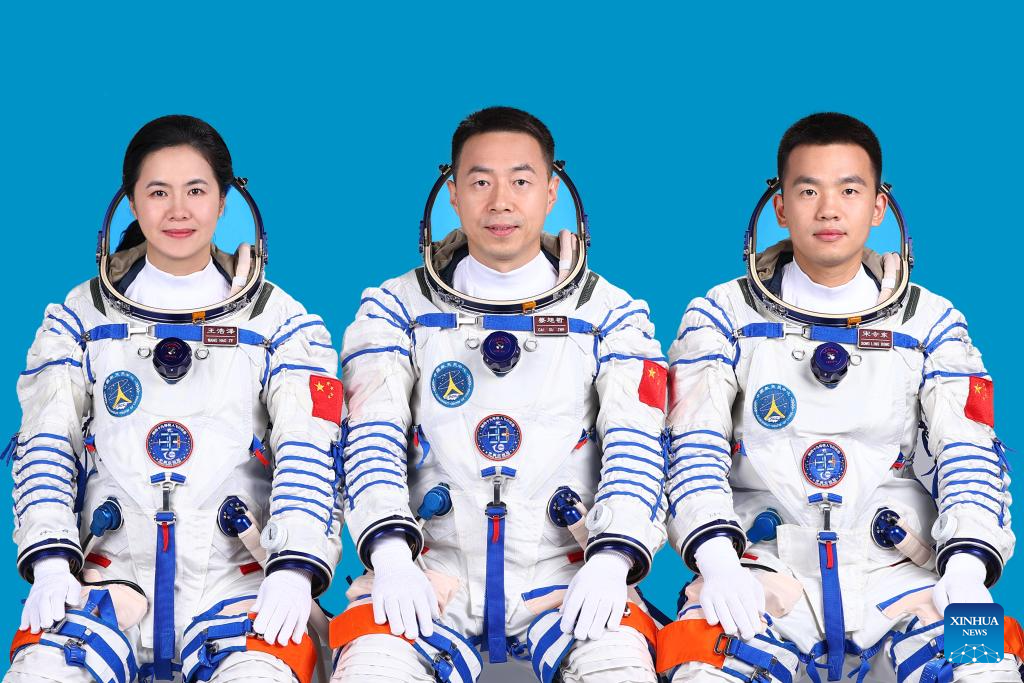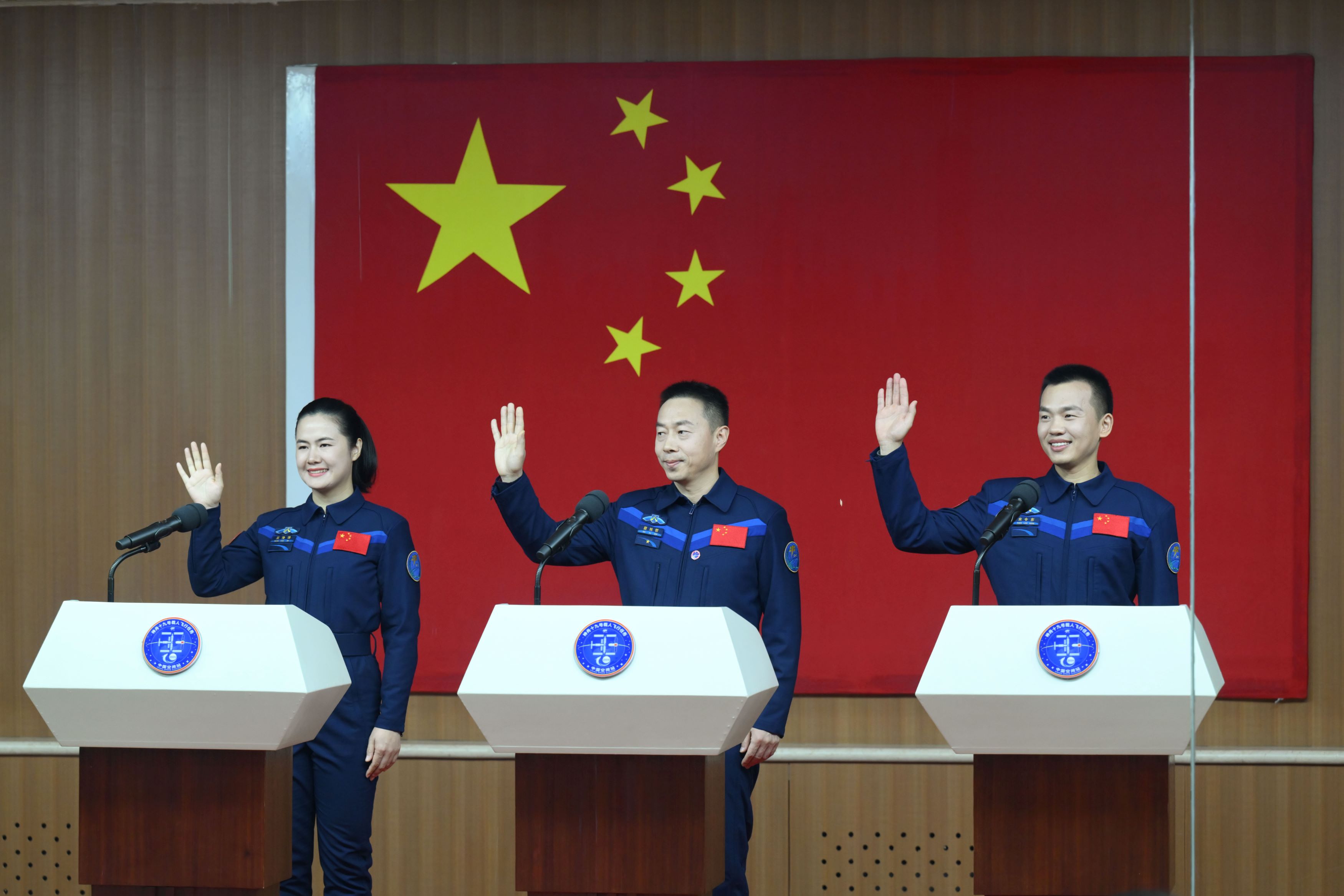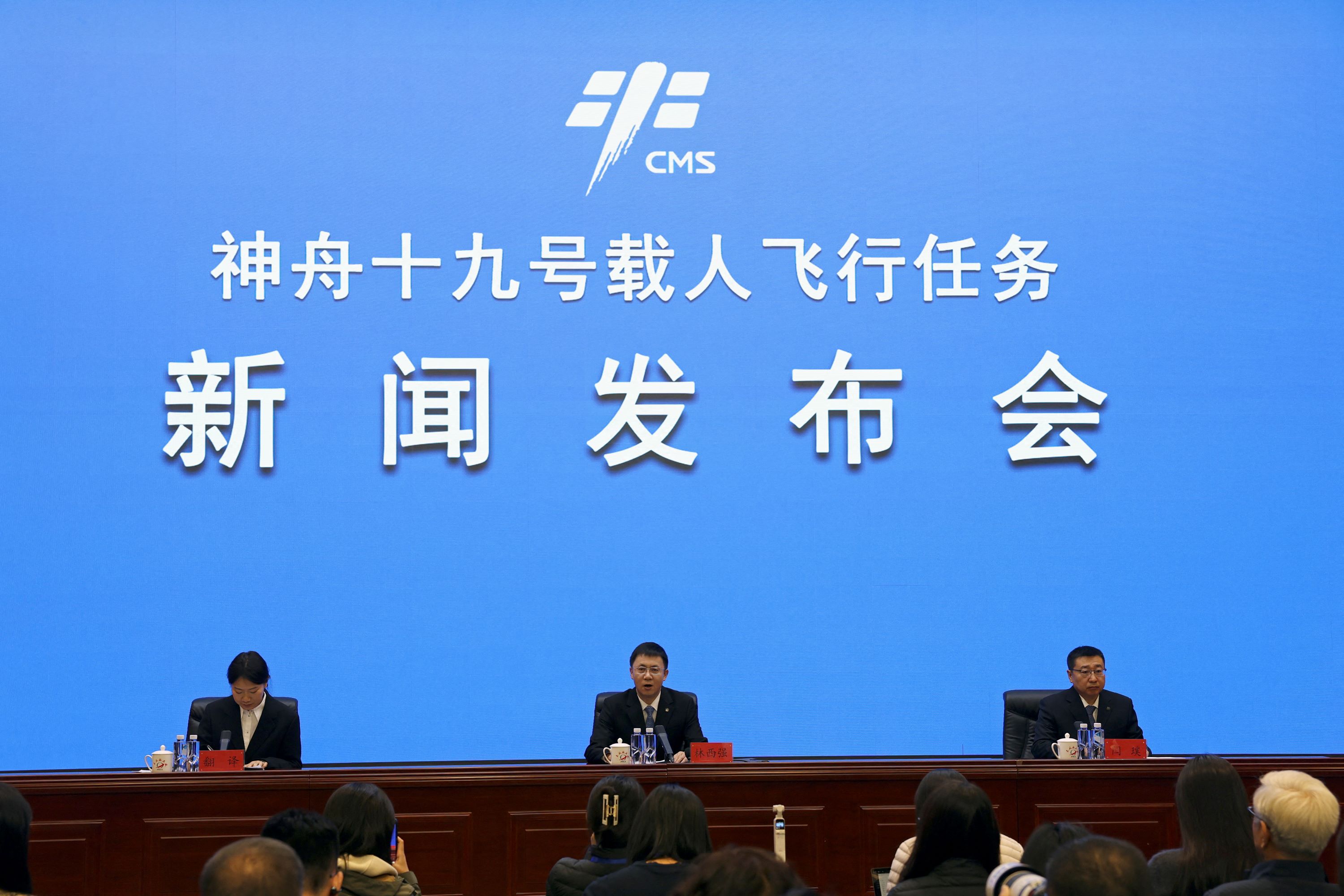
JIUQUAN - China's Shenzhou ⅩⅨ crewed spaceship is scheduled to be launched at 4:27 am Wednesday (Beijing Time) from the Jiuquan Satellite Launch Center in the country's northwest, the China Manned Space Agency announced on Tuesday.
The launch will use a Long March-2F carrier rocket, which will be filled with propellant soon, said Lin Xiqiang, deputy director of the CMSA, at a press conference.
Chinese astronauts Cai Xuzhe, Song Lingdong and Wang Haoze will carry out the Shenzhou ⅩⅨ crewed spaceflight mission, and Cai will be the commander, Lin said.
READ MORE: China prepares to launch Shenzhou XIX crewed spaceship
Cai completed the Shenzhou ⅩⅣ space mission in 2022. Song and Wang, among the third batch of Chinese astronauts, are newcomers to space. Both of them were born in the 1990s.
Song was a former air force pilot before being selected as an astronaut, and Wang previously served as a senior engineer at the Academy of Aerospace Propulsion Technology under the China Aerospace Science and Technology Corporation.
ALSO READ: China unveils future space science plan
Wang is currently China's only female space flight engineer and will become the third Chinese woman to embark on a crewed spaceflight mission, the agency noted.

Shenzhou ⅩⅨ is the 33rd flight mission of China's manned space program, and the fourth manned mission during the application and development stage of China's space station.
After entering orbit, the Shenzhou ⅩⅨ spaceship will perform a fast automated rendezvous and docking with the front port of the space station core module Tianhe in about 6.5 hours, forming a combination of three modules and three spacecraft, Lin said.
READ MORE: Tianzhou 6 burns up safely reentering Earth
The Shenzhou ⅩⅨ astronauts will complete in-orbit rotation with the Shenzhou ⅩⅧ trio and stay at the space station for approximately six months, witnessing the arrival of the Tianzhou 8 cargo craft and Shenzhou ⅩⅩ crewed spaceship during the mission.
ALSO READ: China fully advances manned lunar landing program
Lin said product qualities of the Shenzhou ⅩⅨ spaceship and the Long March-2F carrier rocket are under control. The Shenzhou ⅩⅨ crew is in good condition. Ground system facilities and equipment are in stable operation.
He added that the space station combination is now in normal status and all preparations for the launch have been completed.
Talking about his upcoming return journey to space, Cai, the 48-year-old commander, said that the bustling space life during his previous mission remains vivid.
From a space rookie in the Shenzhou ⅩⅣ trio to now the leader of the Shenzhou ⅩⅨ crew, Cai said he felt proud and had a greater sense of responsibility. He pledged to work with his colleagues to do their best to enhance operational quality and emergency response capabilities.
The new crew will have many tasks to complete, including conducting space science and application tests, performing extravehicular activities, installing protective devices against space debris, and installing and recycling extravehicular payloads and equipment. They will also engage in science education, public welfare activities, and other payload tests.
The Shenzhou ⅩⅨ astronauts are scheduled to return to the Dongfeng landing site in North China's Inner Mongolia autonomous region in late April or early May next year, according to the agency.
The Shenzhou ⅩⅧ crew is scheduled to return to the Dongfeng landing site on Nov 4 after completing the work handover to the Shenzhou ⅩⅨ crew.
READ MORE: China unveils future space science plan
During the press conference, Lin also added that due to the impact of Super Typhoon Yagi on the Wenchang Spacecraft Launch Site in South China's Hainan province, where the Tianzhou-8 cargo spacecraft is to be launched, the Tianzhou-8 mission has been rescheduled for mid-November.

Preparations for Tianzhou 8 are progressing smoothly in accordance with the revised plan.
Lin said the planning of China's space station missions has taken into account similar situations, and there is now an ample supply of materials in orbit.
Attention to delayed US astronauts
China's space workers are paying close attention to the two in-orbit American astronauts who have been delayed returning to Earth and wish for their safe return, the CMSA spokesperson said.
"We appreciate NASA's high regard for the safety of its astronauts, and at the same time, we extend our best wishes for the safe return of the two astronauts," Lin told the press conference.
READ MORE: Four astronauts return to Earth after delays from Boeing issues, hurricane
Two NASA astronauts were left behind at the International Space Station after Boeing's troubled capsule returned to Earth in September. Their original itinerary on the test flight was eight days, but they will wait for a ride back with SpaceX in late February next year.
Lin said that manned spaceflight activities are always fraught with risks and challenges, and the safety of astronauts is always the top concern for governments and people worldwide.
He emphasized that China has continuously enhanced its emergency response plan for potential threats like space debris. The time available for astronauts to respond to emergencies has now increased by five times compared to the early operation phase of China's space station.
READ MORE: Without astronauts, Boeing's Starliner returns to Earth
According to Lin, in extreme situations, astronauts onboard the space station have two options for returning: either they can return using in-orbit spacecraft or wait for the launch of the standby spacecraft for emergency rescue.
The Shenzhou ⅩⅩ manned spacecraft and a Long March-2F rocket are now on standby at the final assembly plant in the Jiuquan Satellite Launch Center. He added that they can swiftly convert to a launch state to carry out emergency rescue missions for astronauts in the space station.



